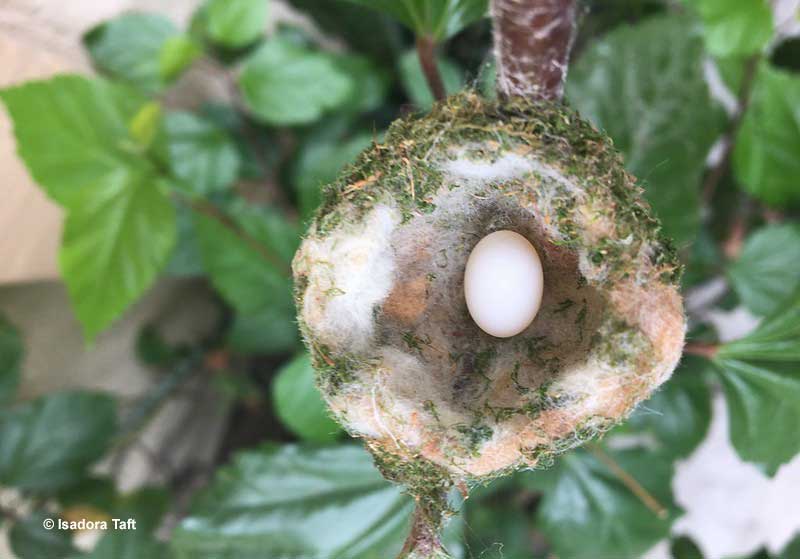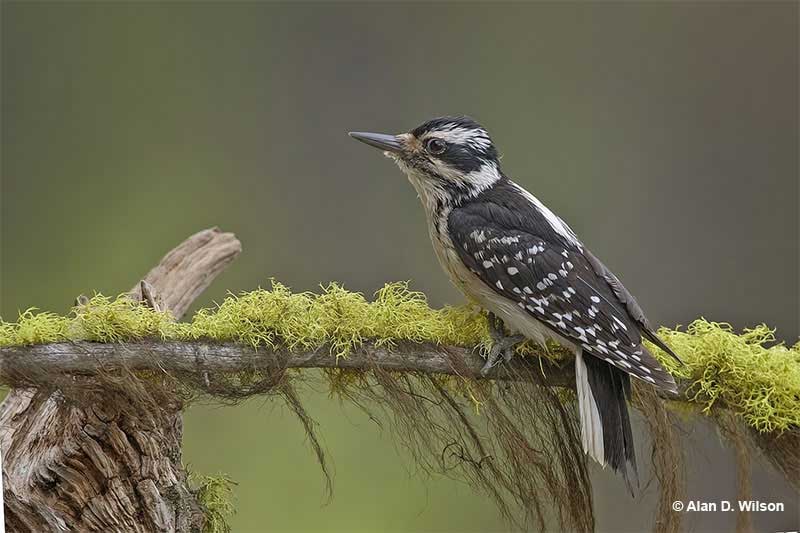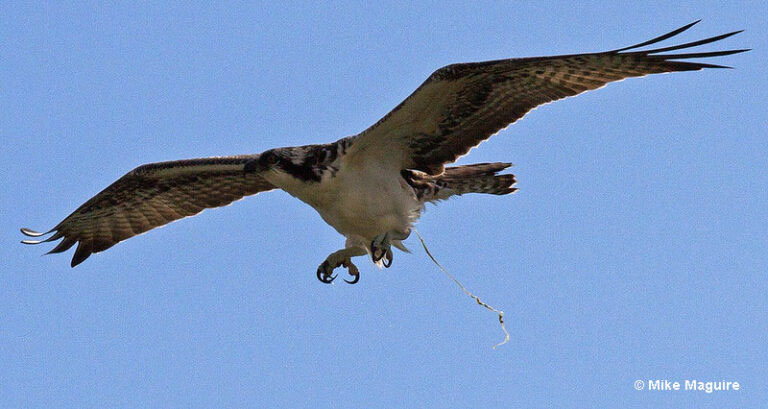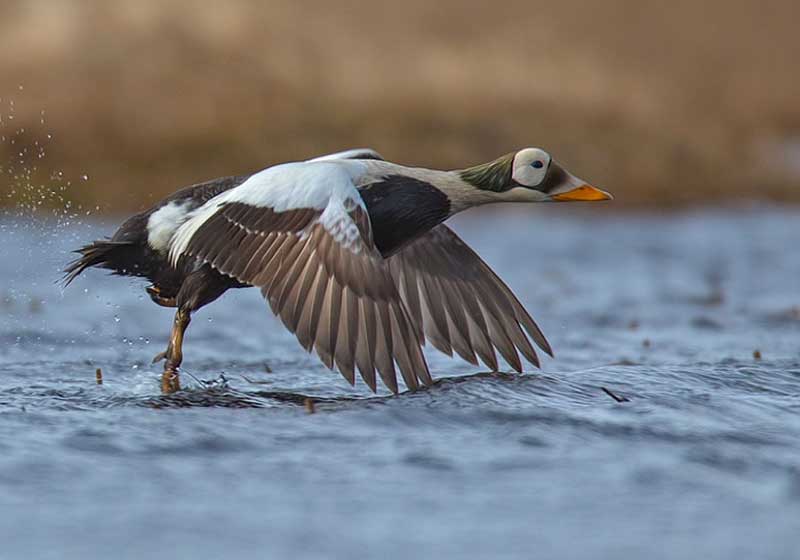Hummingbird eggs are small, frighteningly small. While hummingbirds are not too large themselves, the question still remains – how come something so magnificent could grow out of something so small?
But how small are hummingbird eggs? How many do they lay, and how do they care for their young?
See this article to learn all about hummingbird eggs and babies!
How Big Are Hummingbird Eggs?
Hummingbird eggs are pretty small. If you put a jelly bean next to an average hummingbird egg, they would be around the same size! However, hummingbird egg size of the egg also depends on which hummingbird species we are talking about.
Although there is only one regular species of hummingbird in eastern North America (the Ruby-throated Hummingbird), the hummingbird family is one of the largest bird families in the world!
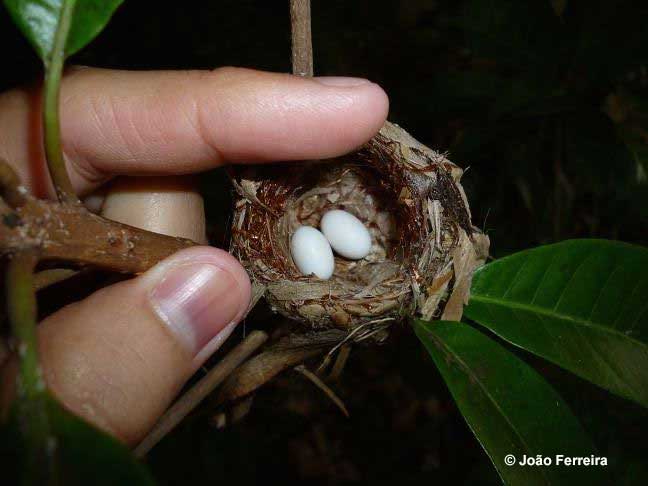
Most species are small, even tiny, but many tropical hummingbirds are the same size as a small warbler or even as big as a swallow!
While Ruby-throated Hummingbird eggs are just half an inch long, Giant Hummingbirds lay eggs around the same size as a penny. On the other end of the egg size spectrum, the Bee Hummingbird lays the smallest eggs of any bird. This tiny bird’s eggs are the same size as a coffee bean!
No matter which species, hummingbirds typically lay two eggs. Unlike many other birds, their eggs are white and don’t have any speckling or other patterns. Their eggs might not need camouflage because they are so small, they are already hidden inside the bottom of their nest.
The mother hummingbird also hides the eggs when she incubates them.
The Hatching Process
Female hummingbirds take care of all of the nesting duties, even picking the nest site. After building her nest, the mother bird lays her eggs and incubates them for two to three weeks. Unlike many other birds, male hummingbirds don’t help in any way, not even bringing food to their mate or young.
During incubation, female hummingbirds leave the nest now and then to feed but still spend most of their time sitting on their eggs. However, in warmer, tropical regions, female hummingbirds can leave the nest for longer periods of time.
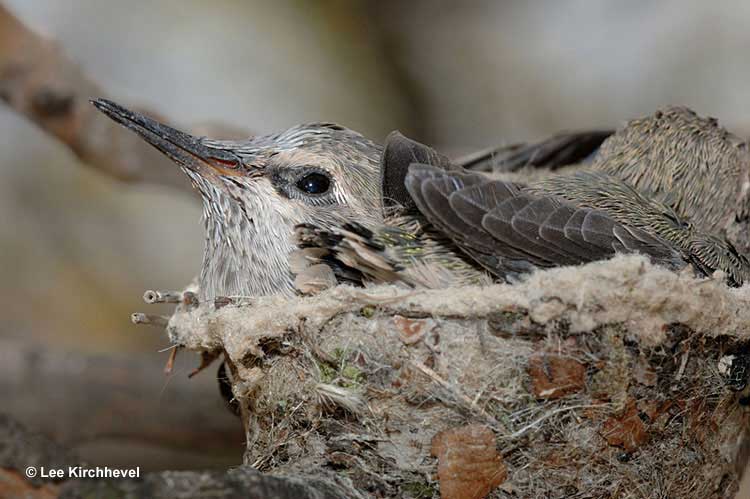
The hummingbird hatching process is not as well-known as other birds. This is probably because it’s very difficult to look into tiny hummingbird nests, especially with the mother bird sitting on the eggs.
However, we do know that when Ruby-throated Hummingbirds hatch out of their eggs, their mother usually picks out the eggshells and drops them below her nest.
Anna’s Hummingbirds and other species do the same thing. Some studies of Anna’s Hummingbird nests also found that baby hummingbirds emerge from eggs after using their “egg tooth” to cut the shell in half. They do this pretty fast, usually in 15 minutes. Both eggs in a nest also hatch on the same day.
Next Stage – Nestlings
After hatching, hummingbird babies are tiny naked birds with dark skin and some fuzzy feathers. They also have white yellowish beaks nothing like the long, pointed bill of their mother!
Baby hummingbirds are helpless, can barely move, and are complexly dependent on their mother. Their eyes stay closed for the first five days after hatching, and it takes around a week for the tiny birds to be covered in downy feathers.
It doesn’t take long for baby hummingbirds to start feeding. Shortly after hatching, their mother feeds them by putting her beak into their mouth and regurgitating and mix of nectar and tiny bugs.
Although nestling hummingbirds are helpless for several days, they can still raise their head and open their mouths. They make this vital movement after hearing their mother give brief “mewing” calls.
Overall, to help her babies grow, the mother hummingbird feeds them more insects than nectar. Female Anna’s Hummingbirds also feed their babies more insects in the afternoon and evening. This and other hummingbird species probably do this to give the nestlings enough protein to stay warm and grow during the night.
The baby birds stay in the nest for 18 to 22 days, and grow for all of that time.
What Happens Next?
By the time baby hummingbirds leave the nest, they grow to be as large as their mother and are usually heavier. They have all of their feathers and can fly, but not as well as adult birds. Fledgling hummingbirds tend to be heavier than their mother so they can have more than enough fat reserves to survive while learning to feed on their own.
They also have shorter beaks than adult hummingbirds. This shortened beak is long enough to poke into and feed from flowers but only half or three fourths as long as an adult bird’s beak. It might help them catch insects, or, their beak might just take a little while to grow.
In any case, after baby hummingbirds fledge, they stay near their mother and she continues to feed them for 4 to 7 days more. After that time, the young hummingbirds are on their own. Their mother doesn’t keep an eye on them, the young birds have to find their own food, and establish their own territories.
It’s not an easy time in a hummingbird’s life, but at least we can help those little birds by maintaining clean, sugar-water feeders. The young birds find their own mates during the next breeding season.
FAQ’s
How big are hummingbird eggs?
Hummingbird eggs are as big as a jelly bean. The smallest species, the Bee Hummingbird has eggs as big as a coffee bean.
Are hummingbird eggs always white?
Yes, hummingbird eggs are always white.
Do different hummingbird species lay different eggs?
Different hummingbird species can lay different eggs, depending on their size. Although all hummingbird eggs are the same plain while color, some species lay tinier eggs than others.
How many eggs do hummingbirds lay?
Hummingbirds typically lay two eggs.
How often do hummingbirds lay eggs?
Hummingbirds lay eggs one to three times per year.
Where do hummingbirds build their nests?
Hummingbirds build their nests in leafy trees and bushes. Some tropical hummingbird species build their nests on the underside of big, drooping leaves. Contrary to some beliefs, hummingbirds do not use birdhouses.
